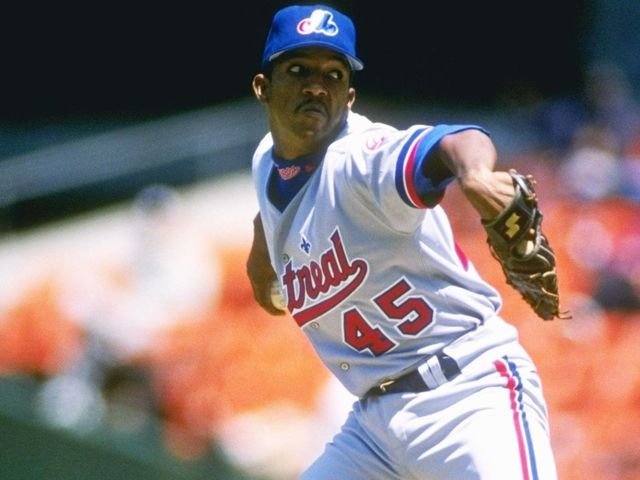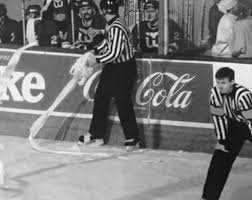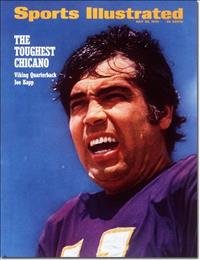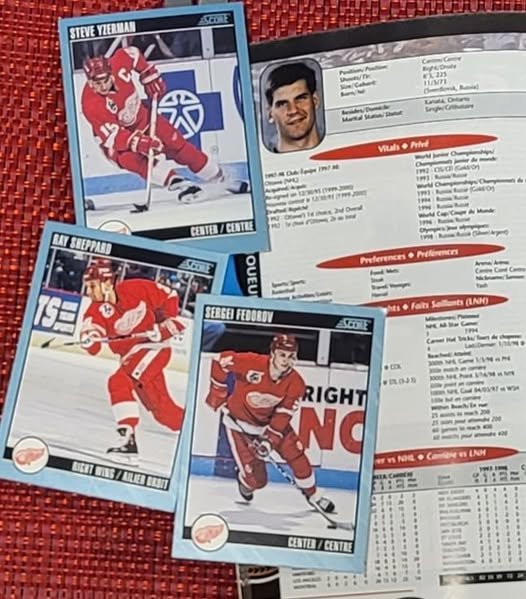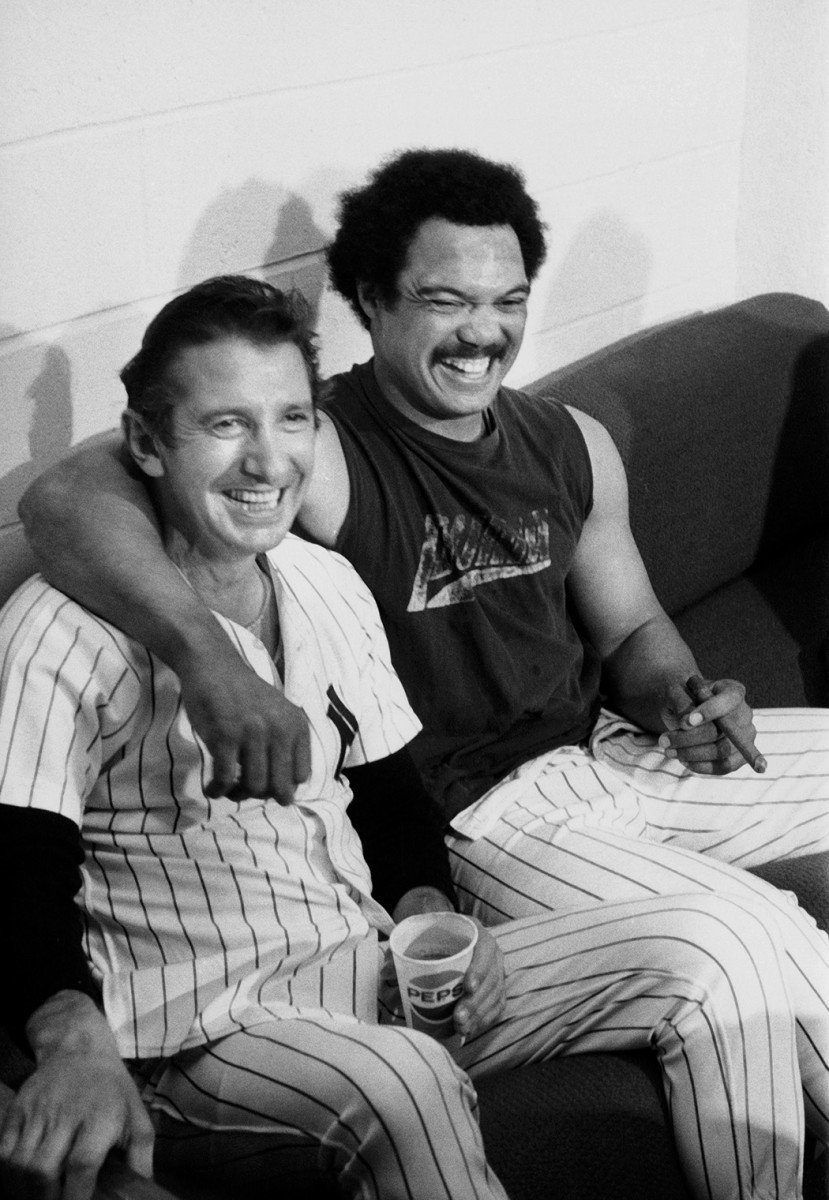by Howie Mooney
Imagine that you’re a 29-year-old guy in your fourth season as a first baseman in the National League. You’re having one of the best seasons of your career so far. While in Chicago, after your game, you go out for dinner with your road roommate, his family and his fiancée. When you get back to your room, there’s a note taped to your door summoning you to meet a woman you think you might know in a room elsewhere in the hotel. When you get there, she tries to kill you – and she almost succeeds.
If this sounds like a scene from The Natural, well, it’s close. And while The Natural was a fictional account of a stalker-type fan acting out some strange fantasy, that movie, and the novel it was based on, came out of a real-life event that took place not too long after the Second World War.
A week and a half before Christmas of 1948, Eddie Waitkus was traded from the Chicago Cubs to the Philadelphia Phillies. He had turned 29 the previous September. The Cubs had been the only organization he had known in his professional career. He started in Moline in their minor league system as a 19-year-old in 1939. In 1940 he moved to Tulsa to play there. In 1941, he managed to get into twelve late-season games with the Cubbies, but he spent the entire 1942 campaign with the Los Angeles Angels of the Pacific Coast League where he accumulated 235 hits and posted a .336 batting average.
As a teen, he had been a high school honour student and graduated twelfth in a class of 600. If he didn’t sign with the Cubs organization, he could have gone to Harvard on a scholarship. When he signed with the club in 1937, it was Christmastime and Eddie bought his sister Stella a pair of figure skates. Stella told Mark Kram of the Philadelphia Daily News in 1999, “That was the first real Christmas we’d had in years.”
He was an intelligent guy who spoke four languages and when he went out, he looked good in his “sophisticated” suits. He was always carefully groomed as well. According to Kram and others closer to Waitkus’ time, “women fell easily for him.” During his time with the PCL Angels, he had been known to make time with the starlet, Lupe Velez. Velez committed suicide in 1944. Eddie’s son, Ted, who grew up to be a lawyer, had a photograph of his father with Velez as the two held hands at a table together. Ted told Kram, “The old man was a dapper SOB…the ladies just loved him.”
Eddie’s first intention after that 1942 PCL season was to attend Cubs’ training camp in the coming spring, but he had to forego baseball in 1943 when he was drafted and joined many of his baseball brethren in military service. The United States had joined World War II in December of 1941 after Pearl Harbor. He ended up serving in the Pacific Theatre and was involved in numerous operations that involved the taking back of islands and atolls from the Japanese. He had started out his stint as a corporal and came home in 1945 as a sergeant.
He broke camp in 1946 with the big-league Cubs and, at 26, was still considered a rookie. He hadn’t played real ball in three-plus years, but he would eventually take the starting first baseman’s job from the veteran, Phil Cavarretta. Waitkus was born in Cambridge, Massachusetts and on his first visit with the Cubs to play the Braves in Boston in June of 1946, a group from his hometown was there to meet him and presented him with a brand-new car. His first time up in that game, he smacked a double to center in a 7-3 Cubs’ win.
Waitkus played 113 games and managed to bat .304 over that season. His performance earned him the nod as the best first-year player in the National League by the Baseball Writers Association of America. There was no formal award in 1946 as there is today. It would become a recognized accomplishment in 1947 when Jackie Robinson was given the very first National League Rookie of the Year Award.
Waitkus was never known as a power hitter, nor was he ever a run producer, but he was a very slick defensive infielder, a productive hitter and a table setter. He batted .292 in 1947 and .295 in 1948. He was an all-star in ’48 as well. At the end of that season, the Cubs sat in the eighth and last spot in the National League though. On December 14 of that year, Waitkus and right-handed pitcher Hank Borowy were traded to the Philadelphia Phillies for pitchers Monk Dubiel and Dutch Leonard.
The trade benefited the Phillies more than it did the Cubs but that took some time to manifest itself. On May 31, 1949, the National League standings were tight. The Phils were in sixth place, three games under .500 at 18-21. The Cubs were in seventh with a record of 15-22. The Brooklyn Dodgers and the Boston Braves were tied at the top of the league at 23-17.
On June 14, the Phillies were at Wrigley Field to play Waitkus’ old team, the Chicago Cubs. The Phillies dumped the Cubs 9-2 that day. Over the period of two weeks, Philadelphia had gone 11-4 and vaulted up to fourth place. The Cubs had gone 4-10 and were looking up in the standings at the rest of the National League. At that point in the season, the Phils’ first baseman was hitting .306 and was really finding his way as a major leaguer. In the All-Star voting to that point, he was the leader among NL first basemen as well.
* * *
Ruth Steinhagen was born in Cicero, Illinois on December 23, 1929. When she was a child, her family moved to Lincoln Park in Chicago. In 1947, she graduated from Jones Commercial High School where she studied stenography. The first time she saw Eddie Waitkus play at Wrigley Field, at the age of about 16, she became obsessed with the first baseman. According to the Miami News, that was in July of 1946, although other accounts have varying dates.
Shortly after that, she began to keep any newspaper clipping or picture she could find about Waitkus. They eventually numbered in the hundreds. According to her mother, she would lay the photos and articles out and just look at them for hours. It got to the point where she asked her mother to set a place at the dinner table for the first baseman. In all this time, she had never met the subject of her fixation.
Waitkus was from the Boston area. As a result, Steinhagen created in her mind a liking for baked beans. He was of Lithuanian descent, so she began teaching herself Lithuanian. In 1948, her family became concerned about her obsession, and they sent her to see a psychiatrist. On the December day that Waitkus was traded to Philadelphia, Steinhagen cried for several days. Even after he had left Chicago, before the 1949 season, her fixation never waned.
She would later tell doctors, “I used to go to all the ball games to watch him. We used to wait for them to come out of the clubhouse after the game…” She and a friend would sit behind the Cubs’ dugout on the weekends. Whenever Eddie passed by her, she would weaken. She had a friend that would accompany her as the pair would follow Waitkus home after he left Wrigley Field.
On June 14, 1949, 19-year-old Ruth Steinhagen booked herself a room at the Edgewater Beach Hotel just north of the city on the coast of Lake Michigan.
* * *
Before the Phillies travelled to Chicago, they had just finished off a long homestand. Perhaps the word ‘long’ is underrated. They played 21 straight games at home in Philadelphia. They went 13-8 over that span of time and had moved up to the first division of the National League. During their time in Chicago, the Phils would be staying at the Edgewater Beach Motel.
Russ Meyer pitched for the visitors in the opener and tossed a complete game. On road trips, he and Waitkus would room together. Despite giving up ten hits in the contest, Meyer only allowed the Cubs a pair of runs, and his team won the game 9-2. Waitkus delivered a hit and a walk and scored a couple of runs to help his buddy gain the win. Meyer’s fiancée was there too, and his parents had driven into town for the game from Central Illinois to cap off the great day.
The win put everyone into a pretty good mood as they all went out into the Chicago evening for a post-game dinner. “We got back to the hotel that night about 11 pm,” Meyer told Bill Pennington of the Bergen County Record in a 1992 interview. “I had gotten my parents a suite and went up there for a while. I got back to the room about 11:45 because (manager) Eddie Sawyer was a stickler for curfew, even if you had your parents in town or something.”
Waitkus had already adjourned to his ninth-floor room and waited for his teammate to get back from his parents’ suite before the midnight curfew. Meyer continued, “Eddie was going with a girl from Boston by the name of Ruth Ann. She was from a wealthy family, and she had the money to occasionally fly into cities to watch us play. But she would always call first.”
Between the time that Waitkus had found his way into his room and the time his roommate returned, a note had been placed on their entrance and was discovered by Meyer. “There was this message on the door from a ‘Ruth Ann’”, Meyer told Pennington. “I said to Eddie, ‘What’s Ruth Ann doing in town?’ He said, ‘What? She wouldn’t come without calling?’ I remember it as if it happened yesterday. He said he thought it must be a spur-of-the-moment thing by her. He said he’d go up to her (twelfth-floor) room and come right back.”
Waitkus seemed concerned about his manager and the team curfew. Meyer told Pennington, “The last thing he said was ‘Tell Sawyer what room I’m in if he calls and that I’ll be right back. I’ll call him as soon as I get in.’ That was it. I got in my pyjamas and brushed my teeth and was getting ready to get into bed when the phone rang. It was our traveling secretary, Frank Powell. He said, ‘Russ, get up to the twelfth floor. Eddie’s been shot.’”
Steinhagen had shot the man with whom she had been obsessed for the previous few years. She used a .22 calibre rifle that she had purchased at a pawn shop. According to Pennington, the bullet pierced his lung and lodged near his spine. The following morning, the attending doctors said that he had a chance to survive but it was probably about 50-50.
“Our room was on the ninth floor. I ran up the back stairwell and the hall (on the twelfth floor) was already full of people. I ran into this room, and there at the end of a little hallway was Eddie, sitting in a chair, his head slumped back and blood trickling down the front of his white shirt from the middle of his chest.”
As Meyer told Pete Dougherty in a 1989 interview in the Albany Times-Union, when Waitkus entered the twelfth-floor hotel room, the woman he met retrieved the rifle from a closet and said, “If I can’t have you, nobody else can.” According to Gary Wisby, in a special piece he wrote for the Chicago Sun-Times, Waitkus thought the woman was joking and he stood up to leave. That was when he was shot. He remained conscious long enough to ask his assailant, “Oh baby, what did you do that for?”
After delivering the shot to Waitkus’ chest, Steinhagen allegedly promptly called down to the front desk. There are differing accounts as to what her exact words were to the person on the other end of the phone but according to an Associated Press article the next day that appeared in the Miami Daily News, she is quoted as saying, “I just shot a man….”
It is said that the quickness of that phone call likely saved Waitkus’ life. In the Pennington piece, Meyer said, “This ‘Ruth Ann’ was still there when I got there. She had shot Eddie and then called the front desk to tell them. If she hadn’t, Eddie would have bled to death. The police had just handcuffed her and were leading her away.”
* * *
The Phils must have been shaken by the shooting of their teammate, but they didn’t seem to allow it to affect their play. They swept the double-header the next day and then completed the series sweep over the Cubs on the Thursday with a come-from-behind 4-3 win in the final fourth game. On that day, Meyer went to the hospital to visit Waitkus. Between the time of the shooting and the end of the four-game set, doctors had performed the first of five surgeries to attempt to remove the bullet. They had cut into his chest and removed a part of his lung. They later had to go in through his back to finally remove the slug. The bullet had passed within a quarter inch of an artery that went to his heart.
“Eddie told me he had knocked on the door and this girl answered,” Meyer told Pennington of his visit. “He said to her that he must have the wrong room, he was looking for his girlfriend. She told him, ‘Oh, I’m a friend of Ruth Ann’s. She went out for a second, she’ll be right back. Come in and wait.’ Eddie said he walked through the door and sat in the chair at the end of the hall. It was a narrow hall with a closet just inside the doorway. When Eddie sat, she reached into the closet and pulled out the rifle.” Meyer said that Steinhagen fired a single shot.
When police looked over the room on the twelfth floor, they went through Steinhagen’s suitcases. In them, they found clippings, news photos and baseball things that primarily dealt with Eddie Waitkus and secondarily the Chicago Cubs. In the bedroom of the rooming house where she lived, they found scores more pictures of the first baseman on her walls. According to Meyer, there was a blown-up picture of Waitkus on the ceiling above her bed. “She was looney,” the pitcher said.
Ruth Ann Steinhagen was arrested at the scene and arraigned on June 30, 1949. When asked why she had shot Waitkus, she seemed to have a myriad of answers. One of the things she said was that Waitkus reminded her of her father. But she also referenced that “the tension had been building up within me, and I thought killing someone would relieve it”. Before she went to court, she told a psychiatrist that “I didn’t want to be nervous all my life”.
But, when the case went before a judge and jury, her lawyers presented a measure to the court that Steinhagen was “unable to cooperate with counsel in the defense of her cause”. She also was unable to “understand the nature of the charge against her”. Chicago police who questioned her after the shooting described her as having “a psychopathic personality with an urge to attract public attention through killing someone big.” They also said that she seemed “to enjoy playing the role of a thrill killer.”
A court-appointed psychiatrist, Dr. William Haines, testified that Steinhagen was “mentally ill” and that she had a type of “schizophrenia”. The Chief Judge, James McDermott, directed the jury to find Steinhagen “insane”. She was ordered to be committed to Kankakee State Hospital. The judge also ruled that if she was able to somehow recover her sanity, that she could be held liable for her crime once again.
Eventually, in 1952, Steinhagen was released from Kankakee. The opportunity to litigate the shooting again came to Waitkus, but he refused. He told an assistant State’s Attorney that he wanted to forget the incident and move on with his life. But that became more and more difficult as time went on.
* * *
Fifty years after, in 1999, Mark Kram set out to try to talk with Steinhagen. He found out where she lived and sent her a letter. It went unanswered. He went to her home in hopes of having even a moment with her. He knocked on her door. He discerned no movement from inside the house at all. He knocked again. Nothing. Again, he tried. He saw the shade in the window move slightly.
He wrote, “I froze. I prepared what I would say to the woman I believed had shot Eddie Waitkus when she came to the door, how – in the space of what would be a few awkward seconds – I could convey to her the honorable intentions I had….that I would like to provide her with a chance not just to set the historical record straight, but to look back on the events of 1949 with the wisdom that only time and personal experience can furnish….I stood and waited.”
Eventually, he realized that his attempt would be fruitless. He returned to his car and drove away.
Ruth Steinhagen would die on December 29, 2012, six days after her 83rd birthday.
* * *
After recovering sufficiently following the shooting and having sat out the remainder of the 1949 season, he went down to Florida to work out and train in order to get back into baseball shape. He had with him Frank Wiechec, the Phillies physical trainer, to help with that. He did a lot of running in the Gulf of Mexico along with a series of specific exercises. While there, he met a nurse from Albany, Carol Webel, and the two married in November of 1950.
Waitkus came back to the Phillies for the 1950 season, and he was productive. The work he and Wiechec did in Florida paid off. Eddie was in great shape and at 30, he was one of the oldest players in the regular lineup. For the only season in his career, he played in 154 games. He batted .284 and led his team in runs scored with 102.
At the end of April, Philadelphia was in the middle of the National League, but by the end of May, they were a game behind the first place Brooklyn Dodgers. By the All-Star break, the Phillies were atop the table, a game ahead of the St. Louis Cardinals and two up on the Boston Braves. They finished the season as the NL Pennant holders with 91 wins – a couple of games over the Dodgers.
The ‘Whiz Kids’, as they came to be known, captured the hearts of the entire country. Their reward was to play the New York Yankees of DiMaggio, Berra, Rizzuto, Whitey Ford, et al in the World Series. The Bronx Bombers swept the kids to take the championship. Once the season was finished, Eddie and Carol got married and everything should have been rosy.
But he never fully regained that ability to feel okay again, and he allowed a lot of things to eat at him. He could never understand why Steinhagen had become obsessed with him and wanted to take his life. He had endured three years of fighting in World War II “without a scratch” and then he has a woman shoot him in a hotel room.
He played three more seasons with the Phillies, but by the end of 1953, he wasn’t the same player anymore. He played in just 81 games and was placed on waivers during spring training in 1954. No one claimed him. He was sold to the Baltimore Orioles before the season started for $40,000. In 1955, after getting into 38 games with the Orioles, he was released before the end of July. The Phillies picked him up again and he finished the season there. When that campaign ended, he was 36 and his baseball career was done.
Waitkus felt that he was leaving the game on good terms. He said that, despite the fact that the Phillies had earlier gone to court to block a claim that he made for Workers’ Compensation after the shooting. The ball club said that Waitkus’ injuries did not occur while in the act of performing his job and so his claim was denied. He had to pay the hospital bill of $4,000 himself.
As his career ended and real life began, he had to find a way to support his growing family. He and Carol had a son and a daughter. The emotional pain combined with the growing physical pain from the gunshot wound and the subsequent surgeries became a burden, and he began to turn more and more to alcohol. He did get a job when a local retailer wanted him to work as an ambassador for them.
“He got a job at a Philly department store,” Russ Meyer told Pennington. “He was married and had two kids. But he was drinking too much and couldn’t hold the jobs. He’d go out for a three-hour lunch, come back stewed and be rude to the customers.” By the 1960s, he was like a wandering gypsy, moving from job to job. He and Carol divorced, and he moved back to Boston.
He got a job as the floor manager for a department store there. He didn’t know it yet, but cancer had been developing in what he still had for lungs and later into his throat. In the summer of 1972, he went into a Boston Veterans’ Administration Hospital. He never came out. He passed away with esophageal cancer on September 15, 1972. He was 53.
Only one person from baseball showed up at the funeral. Eddie Pellagrini was a teammate on the 1950 Phillies team. None of the teams he played for sent so much as a card.
Meyer remembered his former teammate. “The guy was a great player, and a kind, thinking man. He had served his country in the war and when he got out, he was finally getting to do what he wanted – play baseball well for a good team. And what happens? He gets shot. How sad, huh?”
Meyer made a reference to the Robert Redford movie in his conversation with Pennington. “Eddie never caught a break. Even after his death, nothing went right, if you think about it. I don’t think Eddie would like to be known as the guy who they modeled ‘The Natural’ after. He wouldn’t want to be remembered for that gunshot. But he is. But his life was no ‘Hollywood-ending’ story. That only happens in the movies.”
* * *
Howie’s latest book MORE Crazy Days & Wild Nights, eleven new stories of outlandish and wild events that occurred in sports over the last fifty years,is available on Amazon. It’s the follow-up to his first book of 2023, Crazy Days & Wild Nights! If you love sports and sports history, you need these books!
You can hear Howie and his co-host Shawn Lavigne talk sports history on The Sports Lunatics Show, a sports history podcast, on Apple Podcasts, Spotify, iHeart Radio, TuneIn Radio and Google Podcasts and at firedupnetwork.ca on 212 different platforms. Check out The Sports Lunatics Show on YouTube too! Please like and subscribe so others can find their shows more easily after you. And check out all their great content at thesportslunatics.com.
The Sports Lunatics Show can now also be heard on Sundays at noon on CKDJ 107.9FM in Ottawa or online at ckdj.net .



